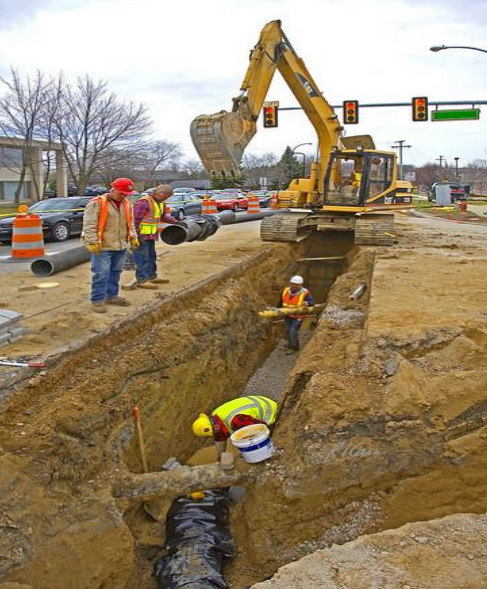Digging Deeper: The Hidden Dangers of Excavating Near Utilities
Introduction:
Excavation is a crucial aspect of construction projects, allowing us to build the foundations of our infrastructure. However, beneath the surface lies a web of utilities – gas lines, water pipes, electrical cables – that are the lifelines of our communities. Excavating near utilities poses a myriad of dangers, both to the workers involved and the surrounding community. In this blog post, we will explore the potential hazards and the essential precautions that excavation contractors must take to ensure safety and prevent catastrophic incidents. For excavation work near Knoxville TN, contact us today!
The Hidden Risks:
Utility Strikes: One of the most immediate dangers of excavating near utilities is the risk of striking underground infrastructure. Accidentally hitting a gas line, water main, or electrical cable can lead to disastrous consequences, including explosions, flooding, and electrocution. These incidents not only endanger the lives of workers but also disrupt essential services, affecting entire neighborhoods.
Financial Consequences: Utility strikes not only pose a threat to human safety but also carry significant financial implications. Repairing damaged utilities can be a costly affair, and contractors may be held liable for repair costs, fines, and legal repercussions. The financial burden resulting from a utility strike can cripple a construction project and damage the reputation of the contracting company.

Precautions and Best Practices
Utility Mapping and Marking: The first and foremost step in preventing utility strikes is to have a thorough understanding of the underground infrastructure. Prior to excavation, contractors must obtain accurate utility maps from local authorities and engage in utility marking services. These maps and markings help identify the location and depth of utilities, enabling contractors to plan their excavation with precision.
Use of Non-Destructive Excavation Techniques: Traditional excavation methods involve heavy machinery like backhoes and bulldozers, which increase the risk of accidental utility strikes. Non-destructive excavation techniques, such as hydro excavation or vacuum excavation, use pressurized water or air to safely expose underground utilities without causing damage. These methods provide a more controlled and precise approach to excavation, minimizing the risk of accidents.
Proper Training and Certification: Excavation contractors must ensure that their team members are well-trained and certified in safety protocols and excavation techniques. Training programs should include information on recognizing utility markings, using excavation equipment, and responding to emergencies. Regular refresher courses can keep the workforce updated on the latest safety standards and best practices.
Communication with Utility Providers: Establishing clear communication with local utility providers is essential for safe excavation. Contractors should coordinate with utility companies to obtain up-to-date information on the location of underground infrastructure. Additionally, notifying utility providers before starting excavation allows them to offer guidance and assistance, ensuring a collaborative approach to safety.
Regular Site Inspections: Ongoing site inspections are crucial to identify any changes in the excavation area that may impact underground utilities. Inspectors should be vigilant in monitoring the work site for any signs of utility exposure or damage. Implementing a culture of constant vigilance ensures that potential risks are promptly addressed, preventing accidents before they occur.
Conclusion:
Excavating near utilities is a delicate dance between progress and potential peril. The hidden dangers lurking beneath the surface demand meticulous planning, advanced technology, and a commitment to safety from excavation contractors. By understanding the risks and implementing stringent precautions, construction projects can proceed without jeopardizing lives, property, and the essential services that utilities provide to our communities. As we dig deeper into the foundations of our infrastructure, let’s not forget the responsibility we bear to protect the invisible lifelines that sustain our modern way of life.